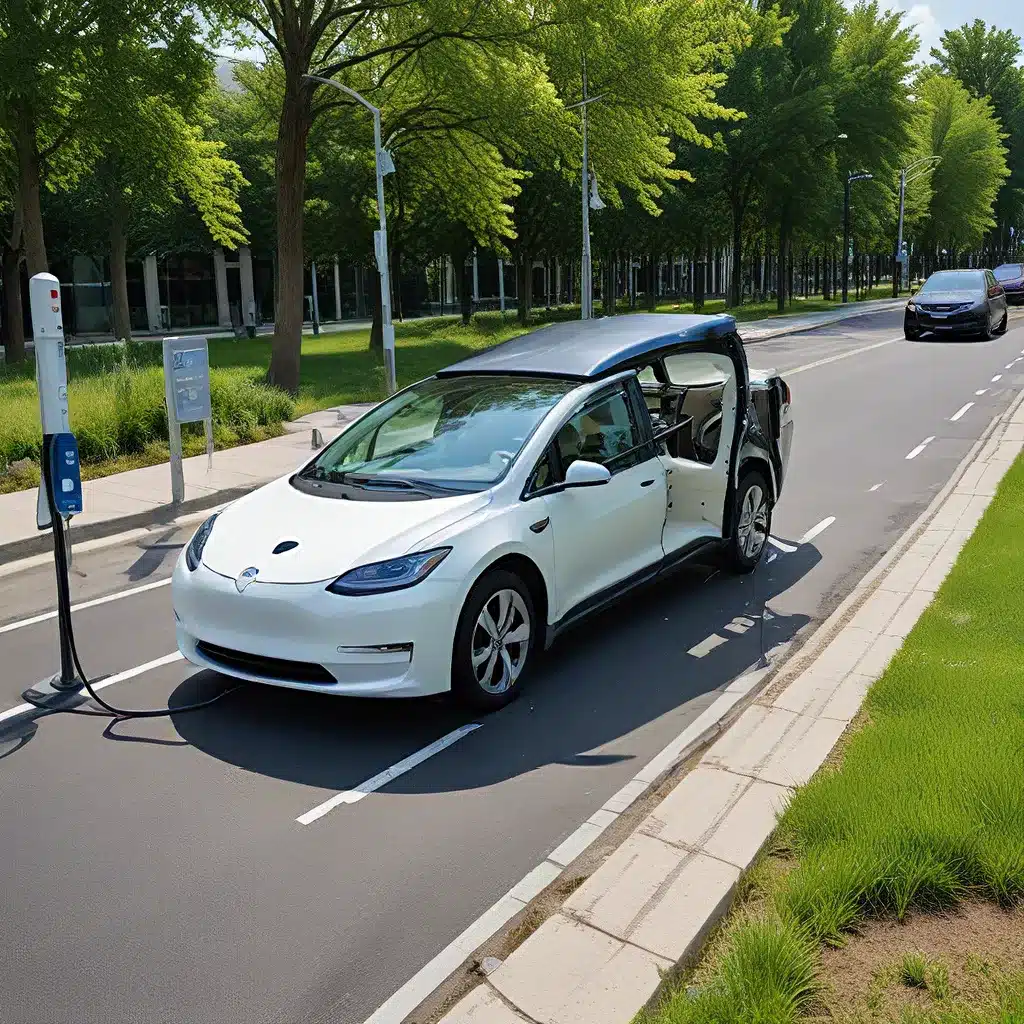
In the race to combat climate change and improve air quality, the world is undergoing a remarkable shift towards electric vehicles (EVs). From bustling cities to rural communities, the landscape of transportation is transforming, and governments are leading the charge.
As an environmental enthusiast, I’ve been closely following this exciting transition. The European Union (EU) has set ambitious goals to decarbonize its transport system, and electric vehicles are at the forefront of this initiative. The numbers speak for themselves – last year, around 150,000 new electric vehicles were sold in the EU, a significant increase from previous years.
But the story doesn’t end there. Some countries, like Norway, are true pioneers in the EV revolution, with one in five new car sales being electric. This impressive feat is the result of a comprehensive package of incentives and policies that have made electric vehicles a viable and attractive option for consumers.
So, what’s driving this shift, and what can we expect in the future? Let’s dive in and explore the policies and technologies that are shaping the sustainable mobility landscape.
Policies Driving the EV Transition
The EU’s commitment to decarbonizing its transport system is unwavering. Specific pieces of legislation, such as those setting targets for the maximum amount of carbon dioxide (CO2) new vehicles can emit per kilometer, have been instrumental in incentivizing the manufacture of low-emitting vehicles, including electric cars.
But the EU’s efforts don’t stop there. Across Europe, countries are implementing a variety of incentives to encourage the adoption of electric vehicles. These include:
- Purchase subsidies: Making the price of electric vehicles comparable to their conventional counterparts.
- Reduced cost of ownership: Offering annual tax reductions, free charging, free parking, or even the use of bus lanes for electric car owners.
These measures have been crucial in making electric vehicles a more attractive option for consumers, as the technology still has some limitations in terms of driving range and charging speed.
However, the EU recognizes that simply replacing conventional vehicles with electric ones won’t solve all the problems associated with transportation. Congestion, the demand for new road infrastructure, and parking spaces are just a few of the challenges that need to be addressed.
The Role of Technology and Infrastructure
As the EV market continues to evolve, technological advancements are playing a crucial role in making these vehicles more practical and appealing to a wider audience. The driving range of electric vehicles is steadily increasing, with some models now offering over 300 kilometers on a single charge.
Furthermore, the charging infrastructure is expanding across Europe, with public charging points becoming as common as traditional fueling stations. The charging speed is also improving, with the fastest charging stations now able to charge a vehicle for a 100-kilometer drive in just 20-30 minutes.
These technological improvements, coupled with the policy incentives, are helping to overcome consumer concerns and driving the widespread adoption of electric vehicles.
The Environmental and Energy Implications
One of the primary drivers behind the push for electric vehicles is the environmental benefits. By reducing the reliance on fossil fuels, electric vehicles can significantly lower greenhouse gas (GHG) emissions and improve local air quality, especially in urban areas.
However, the environmental impact of electric vehicles is not just limited to their tailpipe emissions. The electricity generation used to power these vehicles also plays a crucial role. Renewable energy generation is essential to fully capitalize on the environmental benefits of electromobility.
The EU is currently exploring the potential impacts of a large-scale uptake of electric vehicles on the energy system and the environment by 2050. This research aims to provide a comprehensive understanding of the challenges and opportunities associated with the widespread adoption of electric vehicles.
Rethinking Mobility: Beyond Electric Vehicles
While electric vehicles are a crucial piece of the puzzle, the path to sustainable mobility requires a more holistic approach. Innovative solutions, such as car sharing schemes and improved public transport infrastructure, can help reduce our reliance on personal vehicles and move towards a more integrated and efficient mobility system.
Additionally, the increased use of low- or zero-emission transport modes, such as electric bicycles and public transportation, can further contribute to the reduction of greenhouse gas emissions and air pollution.
The Road Ahead: Opportunities and Challenges
As I reflect on the progress made in the field of sustainable mobility, I’m both excited and cautious about the future. The policy shifts and technological advancements are undoubtedly paving the way for a cleaner, more efficient transportation system.
However, the challenges ahead are not to be underestimated. Continued research, public-private collaboration, and societal changes will be crucial in overcoming the hurdles and realizing the full potential of sustainable mobility.
One thing is certain: the future of transportation is electric, and the policy shift towards electric vehicles is gathering momentum. As we navigate this transition, I’m hopeful that we can create a more sustainable and livable world for generations to come.
If you’re interested in exploring the latest developments and potential impacts of electric vehicles, I encourage you to check out the resources provided by the Firewinder team. Their expertise and insights can help you stay informed and engaged in this exciting chapter of our mobility evolution.

